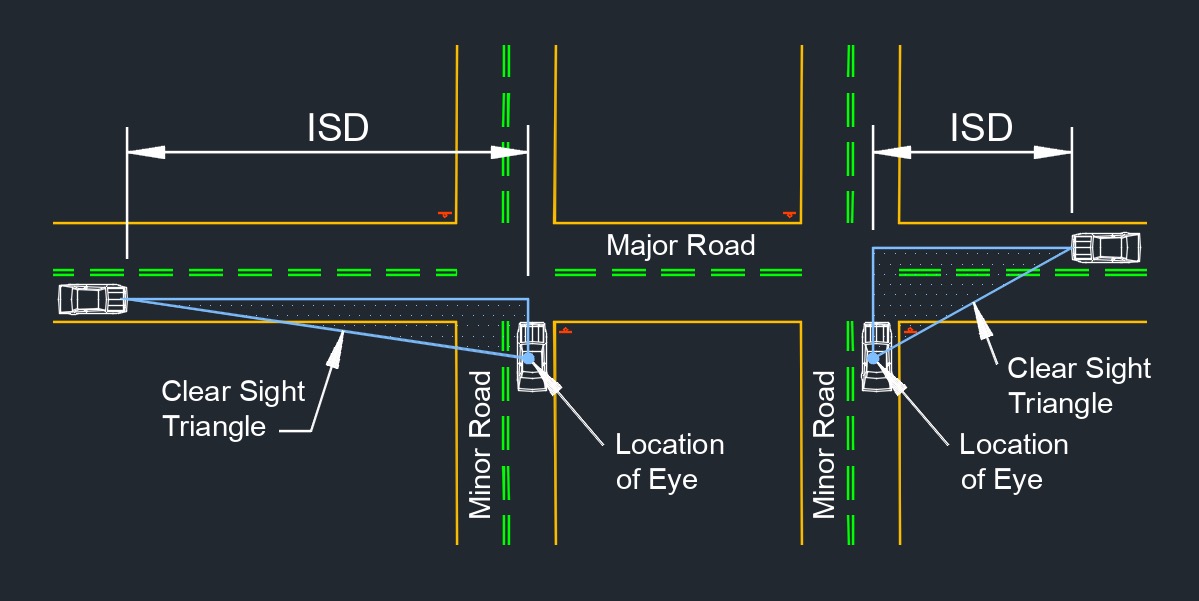Intersection Sight Distance
Intersection Sight Distance Formula |
||
| \( ISD \;=\; 1.47 \cdot V_{major} \cdot t_g \) | ||
| Symbol | English | Metric |
| \( ISD \) = intersection sight distance | \(ft\) | \(m\) |
| \( V_{major} \) = design speed for major road | \(ft\;/\;sec\) | \(m\;/\;sec\) |
| \( t_g \) = gap acceptance time for entering the major road | \(sec\) | \(s\) |
Intersection sight distance, abbreviated as ISD, is the corner sight distance available in intersection quadrants that allows a driver approaching an intersection to observe the actions of vehicles on the crossing leg. ISD is also the distance along a roadway at an intersection that a driver needs to be able to see clearly in order to safely make decisions and maneuvers. This is particularly important for situations where two roads intersect, as drivers need enough visibility to assess traffic conditions, judge the speed and distance of approaching vehicles, pedestrians, and any potential hazards before entering the intersection or making a turn.

ISD is a critical factor in road design and traffic engineering. It ensures that drivers have adequate visibility to make safe decisions and prevent accidents. The required intersection sight distance can vary based on factors such as speed limits, road geometry, vehicle types, and the presence of obstacles that might obstruct the line of sight.
In roadway design and planning, engineers consider factors like the vertical and horizontal alignment of the road, the height of obstacles like bushes, buildings, or other structures, and the angle of approach to calculate the necessary ISD. Different standards and guidelines exist for determining the appropriate intersection sight distance based on the specific conditions of the intersection and the road. These standards are often established by transportation departments and organizations to ensure uniform safety practices in road design and construction.

